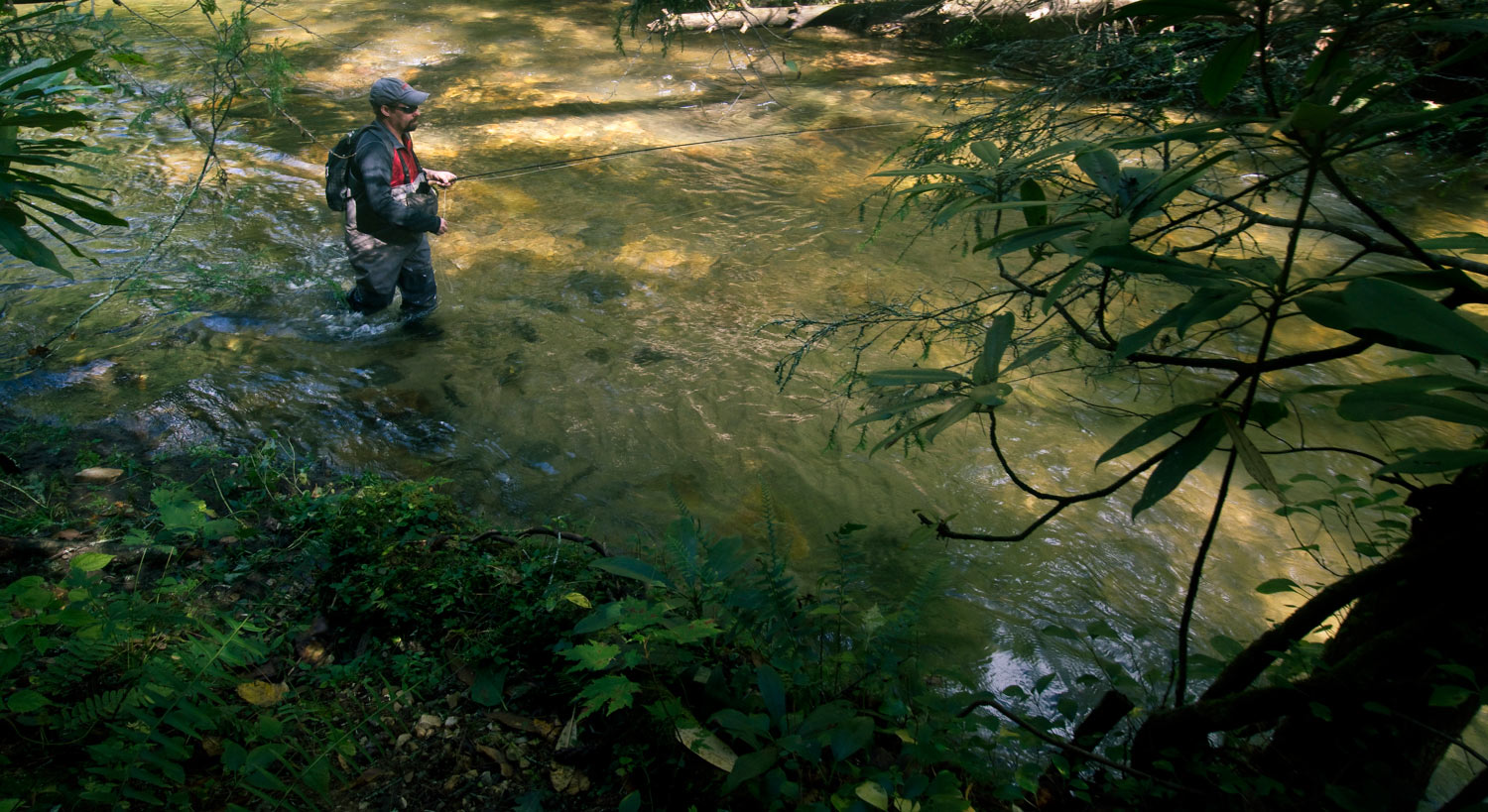By Jason Tucker
I used to spinner fish for trout a lot.
Much of it was done as a scouting tool in preparation to come back and fly fish, and at times I even clipped the hook off and simply took note where the fish were. It was a great scouting tool, one I have long since abandoned.
In several years of this kind of fishing I began to notice a trend. In my haste to cover water, I often kept wading as I cast. At times I was puzzled as to why a particularly good spot did not yield a fish. I would stop and cast some more, and very often come up with a fish.
Over time a pattern emerged. If I was in motion, I came up blank; if I stopped moving, a fish would strike. I even began to experiment and count the fish I caught while moving and standing still. There was no comparison. Oftentimes fish would follow and not strike if I was in motion, and then strike once I stood still.
I later tested this while fly fishing, using a skunk pattern. I often fish up a stretch of river with dries, and then fish skunks back downstream. Skunks work best with a down and across presentation. Again the pattern emerged– if I was in motion I caught nada, if I stood still, even in a pool I had already disturbed, then I at least had a chance at fish.
Sound moves faster and more efficiently through water than air–it’s science.
We as angler’s also tend to disregard how in tune with their surroundings trout are and underestimate the impact of our presence on the river. Imagine someone breaking one of your windows while you’re at home, clomping through your living room while you’re sitting there, and thinking that they were stealthy. That’s how we probably come across to most trout. No matter how quiet you try to be, if you touched the water, the trout probably heard it, and continuing to move while presenting a fly is one of the biggest mistakes you can make.
Next time you are on the river, if you must enter the water, do so as quietly as possible. Approach within casting distance and then stand STILL. This includes not shuffling your feet while you cast. Your success rate will go up, trust me.
Jason writes the fine blog Fontinalis Rising
Jason Tucker
Gink & Gasoline www.ginkandgasoline.com hookups@ginkandgasoline.com Sign Up For Our Weekly Newsletter!

In this article Jason Tucker makes the valid point that to avoid scaring trout we should avoid moving whilst fishing up- or downstream. “Sound moves faster and more efficiently through water than air”. Good point.
My other rule of thumb is multiply by 6 your height above the water, and stand at least that distance away from trout you are targeting
see:http://www.flyfishingdevon.co.uk/stealth.shtml
Great advice, I’ve never landed a trout while moving in the water. In fact after I get into position, it usually takes at least 4 to 5 minutes for me to connect with a trout. Moving in super clear water makes it even more difficult to land trout. Thanks for sharing
10 seconds for the first cast, 4 minutes untangling the tippet?
One of the best pieces of advice I have received so far is to stay out of the water if you can. Not always possible I know but it’s surprising how many fish I have a chance at when I can manage to cast from the bank. I often will kneel down and try to keep as low as I can.
I also try to stand still for at least a 30 count once I do get into position in the water. This also seems to help, no mater what the water conditions.
good stuff. I love fishing in the late hours of night . Night fishing is a wonderful experience for me.
Great post! It’s true as trout ninjas catch the most trout.
Pingback: Tippets: Bolivian Gold, Drone Fishing, Stealth Wading | MidCurrent
Pingback: Three Good Articles - Trout Tips Edition | Fly Fishing Articles